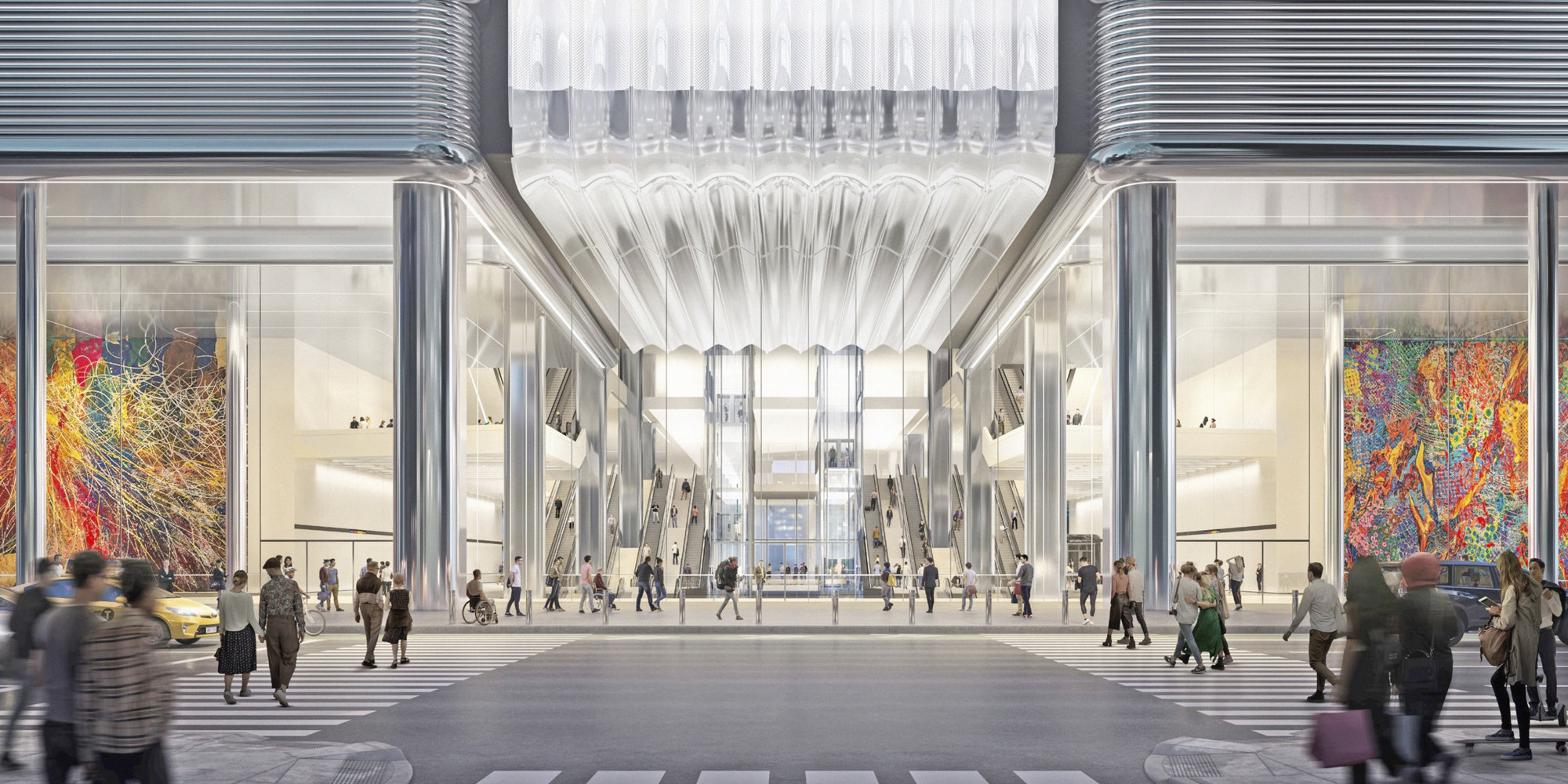Designs for the Port Authority of New York and New Jersey’s new Midtown Bus Terminal in Manhattan have been revealed. The project replaces the existing 73-year-old, functionally obsolete terminal with a world-class facility. Designed by Foster + Partners and A. Epstein and Sons International Inc as a joint-venture, under contract to the Port Authority, the terminal will provide a best-in-class customer experience that serves the region’s 21st century public transportation needs and enhances the surrounding community.
Nigel Dancey, Head of Studio, Foster + Partners, said: “This project will revolutionize the way people experience the city of New York. Foster + Partners’ new terminal design delivered to the Port Authority makes public transportation more inviting and accessible, with passenger-centric design, intuitive wayfinding and permeable new public spaces.”
Antoinette Nassopoulos-Erickson, Senior Partner, Foster + Partners, added: “The project is about reimagining the transport hub of the future, bringing together the subway and bus network into a single integrated terminal. The design puts the passenger first and will be at the cutting edge of security, comfort and inclusivity, while being of its place and serving the people of New Jersey and New York.”
Juan Vieira-Pardo, Partner, Foster + Partners, said: “The new terminal is centered around a light-filled atrium that is bright, uplifting, and intuitively guides commuters through the building.”
The new 2.1 million square foot terminal will be a state-of-the-art transport hub, designed to meet projected 2040-2050 commuter growth and to address community concerns by eliminating bus traffic on surrounding streets. The building’s outward-facing retail will benefit commuters and the local community alike, while making the building more permeable and inviting at street level.
As part of the $10 billion project, a section of 41st Street would be permanently closed to traffic, in order to create a large atrium at the heart of the new structure. Flooded with natural daylight through a central skylight, the atrium will act as a vibrant new public space for the city. The back wall is fully glazed to animate the building’s interior spaces and strengthen its connection with the street.
Centrally located escalators, stairs and elevators are clearly identifiable from the moment of arrival – and provide a more inclusive journey through the space. The multi-story atrium also creates clear visual connections between the various levels, making wayfinding intuitive. The atrium can be accessed via two main entrances at street level or from the subway below ground. Voids between the ground floor and the subway level are designed to reinforce their connection.
Built for the future and designed to be net-zero emissions, the terminal will provide all-electric bus fleets and implement 21st century technology at every turn. A staging and storage facility and new ramps leading directly to and from the Lincoln Tunnel, built over Port Authority property to the west of a new terminal, will create added capacity for buses that now circulate and park on city streets in the surrounding community.
When complete, the project will introduce 3.5 acres of publicly accessible green space to enhance wellbeing across the community. The building will also include visionary sustainability and resiliency measures, from LEED certification and clean construction to onsite renewable energy, zoned heating and cooling systems, and heat recovery and reuse technology.
The project is expected to be constructed in phases, with the staging and storage facility completed in 2028 to serve as a temporary terminal until the new main terminal is completed in 2032.










